Archive for June 2013
“Jambalaya, A Crawfish Pie, and A Toxic Gumbo”
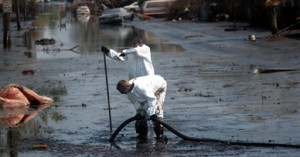 “My worst nightmare is the release of these contaminants that right now tend to be sequestered in environments that are not too mobile,”
“My worst nightmare is the release of these contaminants that right now tend to be sequestered in environments that are not too mobile,”
That's Texas A&M at Galveston Prof Patrick Louchouarn talking about the lack of wheels on over a dozen toxic-infested Superfund Sites in the Houston – Galveston area that might be subject to a great deal of involuntary mobility in the case of a hurricane striking the Gulf Coast again this season.
"In the case of hurricane-driven waters washing over and churning up soil and sediment, Louchouarn worries that the contamination will be dislodged and eventually consumed. At some Superfund sites there are signs warning people not to eat the fish from nearby waterways. The sites are along shorelines and one is even partially submerged in a river.
'In the long-term what we fail to realize is that when you have these major disturbances you reintroduce these long-lived contaminants that can stay in the environment and get into the food chain over decades.”
Full article from StateImpact/NPR here.
Illegal Border Crossings
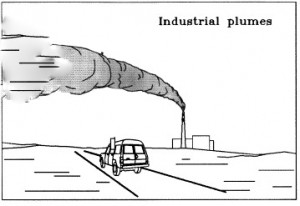 If you live downwind of a state line in the US, you're more likely to breathe the wastings heaved out by heavy industrial air polluters according to a new study reported on by the Washington Post today.
If you live downwind of a state line in the US, you're more likely to breathe the wastings heaved out by heavy industrial air polluters according to a new study reported on by the Washington Post today.
University of Georgia, Georgetown, and University of South Carolina political scientists collaborated on the findings, which document "State Line Syndrome, i.e. when large air polluters are disproportionately likely to be located near downwind borders instead of sharing the burden with more interior locales.
This is not a new phenomena. Lots of case law has been made by one state suing another over cross-border pollution issues. About a decade ago, the Midlothian cement plants were cited by Oklahoma and Tribal Authorities as a statistically significant contributor to haze problems at the Wichita Mountains Wilflife Refuge in the western part of he Sooner state. However, what the new study shows is despite the lack of no logistical reason for many large air polluters to be located near a border, that's where they're concentrated anyway. The result?
"…the farther a location is from a downwind border, the lower the odds that it will host an air polluter. For instance, being about 100 miles upwind of a state line reduces the odds of an air polluter locating there (compared to a hazardous waste facility) by around 6 percent.
The effect is also strongest among the biggest polluters. The facilities that release the most toxic emissions (measured by number of pounds) are the most likely to locate near a downwind border."
But what's at least as interesting to citizens as the confirmation of concentrations, are the motives the professors hypothesize for allowing or designing these concentrations by state government:
"One is that state policy makers encourage it. For instance, Texas would surely want the economic development and tax revenue that would come from a new manufacturing plant. But the state could probably do without the resulting toxic emissions. So one option would be to encourage a manufacturer to locate on Texas’ northern border, where the wind tends to blow across the Red River into Oklahoma.
Alternatively, companies might decide on their own to build a facility in a location where pollution would be carried across state lines. Doing so might reduce the effectiveness of NIMBY, or not-in-my-backyard, activism. If the citizens who feel threatened by a plant live across the border, they may have a hard time persuading lawmakers in the facility’s state – who have little incentive to attend to the concerns of out-of-state residents – to oppose its construction or operation."
That's sounds like the paranoid ranting of a angry housewife or two we've met over the years. And it probably gives Texas officials too much credit for caring about their own airshed. But it does once again show the impossibility of trying to solve air pollution on a piecemeal basis rather than taking a firm and aggressive federalist approach to the problem. What if we dealt with infectious diseases the way we do air pollution – refusing to recognize the transport of the harmful virus across local or state lines? Science has amply demonstrated that we do all indeed live downwind. Time for policy to catch-up.
Notice Something Missing So Far This Summer? Smog Alerts.
 Along with cooler weather in general and a little more rain this Spring has come some relief from really dirty air in DFW.
Along with cooler weather in general and a little more rain this Spring has come some relief from really dirty air in DFW.
Last year at this time, we'd already had 6 "exceedences" of the old 1997 85 parts per billion ozone standard in May, and countless exceedences of the tougher new 75 ppb standard that is supposed to be attained by 2018. As of today, we haven't had one even one monitor reading above 85 ppb and only a handful in the 75 to 85 ppb range.
For the last two years in a row, DFW has seen a decrease in air quality, and an increase in smog. Could 2013 be the year that trend is halted?
Weather takes a lot, or even most of the credit. Cooler temperatures and more moisture are not conducive to ozone creation. But unlike during the recession, new car sales seem to be taking off the way the Rick Perry-approved engineers at the Texas Commission on Environmental Quality wanted them to two to three years ago. It's possible that the replacement of older dirtier vehicles with newer, cleaner ones by the thousands has finally made a difference you can't see. There's also the impact of cleaner operations at the Midlothian cement plants thanks to citizen victories over the last decade, (although the kilns are rapidly turning back into garbage burners), fewer coal burning plants downwind, and other improvements up and down the southeast to northwest axis that carries our predominant winds from Houston to here.
On the other hand, last June was pretty quiet until the 24th, and then all hell broke loose, with ozone levels into the triple digits. 2012 turned out to be a very bad year for safe and legal air.
And there's the unknowns that nobody's really examining closely – at least not in public. How much ozone pollution is being caused by the natural gas infrastructure in the Barnett Shale that's been built over the last decade and gets bigger every week? How much is the gas industry polluting upwind of us in places like Freestone County between here and Houston? Does the continuing boomtown growth in DFW population cancel out the improvement in individual vehicle emissions?
From a regulatory point of view, no matter how good or bad this summer is, we don't get credit for it either way. Another bad year wouldn't be held against us. Likewise, no violations this entire year wouldn't buy us any more goodwill from EPA. We're in a limbo period, where everyone is just waiting around for the average readings from 2015 -2018 to accumulate and tell us what category of compliance with the new 75 ppb standard we're in. While it would certainly help the cause if the region had some forward momentum in lowering the levels of smog going into 2015, officially, it makes no difference at all – unless you're breathing air. Then, according to EPA's own scientists, anything above 65-70 ppb is damaging to human health.
Theoretically, the TCEQ is supposed to be putting together yet another "DFW clean air plan" to reach that 75ppb standard, to be implemented sometime between now and 2015. The last time it tried to reach such a regulatory goal – the 85 ppb standard – it ended up with a plan that worsened air quality here by starting way too late and basically doing nothing but watching as new cars were going to clean up the air in the middle of a recession. (By the way, the "official" regulatory date of that failure is coming up next week even though the failure was certain last summer. Stay tuned to see if TCEQ acknowledges it in any way).
It's the summer of 2013. Any big changes that need to be in a summer of 2015 clean air plan should be being discussed and set in motion now, especially if they need 2015 state legislative approval, or lead times for industry to adapt. However, state or regional officials have yet to call a meeting of the local advisory group that's supposed to be monitoring the development of that plan. No date is set for such a meeting.
We can hope that a confluence of circumstances is making it possible to have cleaner air in DFW, but as long as Rick Perry is Governor, it's unlikely such an important public health goal will override political agendas.
Why Exide Going Bankrupt Could Be a Good Thing
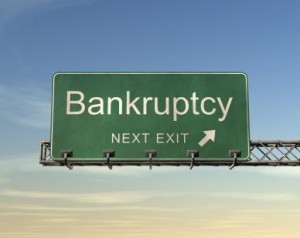 A months-long deathwatch surrounding Exide Technologies got a little closer to its climax on Thursday with a Wall Street Journal story quoting "people familiar with the matter" as saying the company was preparing to file for bankruptcy for a second time in a decade sometime this summer.
A months-long deathwatch surrounding Exide Technologies got a little closer to its climax on Thursday with a Wall Street Journal story quoting "people familiar with the matter" as saying the company was preparing to file for bankruptcy for a second time in a decade sometime this summer.
The original article is behind the Journal's pay wall, but it provides some details as to how the mechanics of such move would work. For one thing, the company's European operations won't be affected at all, according to the story. That's a hint that the company wants to find a way to fully separate its substantial US environmental liabilities – including the toxic waste dump formally known as the Frisco lead smelter – from what it considers to be its more salvageable parts.
Exide is carrying approximately $700 million in debt and many financial analysts doubt its ability to repay a $56 million note due in September. Thus, the summer timing. There was also probably some consideration to cash out while there was still some cash left. Shares of he company were selling for a record low of 34 cents on Thursday. It's last quarterly report in December 2012 cited a $15.4 million loss compared to a profit of $68 million in 2011.
Meanwhile, the company is providing plenty of work for lawyers and bankers:
Restructuring lawyers at Skadden, Arps, Slate, Meagher & Flom LLP are working with the company, while law firm Akin Gump Strauss Hauer & Feld LLP is advising an independent board committee, the people said. Paul, Weiss, Rifkind, Wharton & Garrison LLP is working with some bondholders and Andrews Kurth LLP is working with convertible-note holders, these people said.
Turnaround firm Alvarez & Marsal is working with the company, investment bank Houlihan Lokey is working with some bondholders and Moelis & Co. is working with convertible-note holders, they added.
Even money that the company has already spent more on this effort than they have cleaning up their mess in Frisco.
While completely predictable, this development now puts the City of Frisco at a crossroads for which it's not prepared.
Exide had no intention of rehabilitating or cleaning-up its Frisco smelter site – the part that still has decades and tons of lead contaminated waste buried in the ground – to provide for normal redevelopment. Even assuming the company and City are completely successful in cleaning up the outer zone of smelter property that the City is buying, there's no such plans for the 100 acres or more of hardcore toxic smelter property that was the core of the operations – and which has Stewart Creek running through it. The same Stewart Creek that runs from Exide into the proposed Grand Park. No matter how much the City tried to put a pretty bow on this situation, it still left a big toxic turd floating in the punchbowl, for which there was no contingency plans.
The upside of an Exide bankruptcy is that now the company won't be able to hold the rest of the City hostage by keeping the site a toxic dump forever. Because it won't own it anymore. Going belly up means there are other options besides the ones Exide was dictating because of its ownership.
On the other hand, bankruptcy for a company such as Exide usually means its environmental liabilities are absorbed by the taxpayers via the federal Superfund Site list. Exide already owns an abandoned local lead smelter. Dixie Smelter in South Dallas closed in 1990 as a result of the city's crack down on inner city lead smelters. It's been a fenced-off no man's land ever since. This is what Frisco city officials dread now. Once it's listed for clean-up it may take decades for it to actually happen. The result is the same as if Exide never lost ownership – you still have a toxic waste dump with the Creek running through it on the way to your new regional park.
What to do? The big difference between this lead smelter site and the ones in Dallas is location. Although originally sited on "the other side of the tracks" in Frisco, the city has transformed itself into the North Texas suburb of choice, to the point where the smelter property is now surrounded by exclusive gated communities and malls.
The City should use this fact, and this brief moment before actual bankruptcy, to work with Exide, the EPA, private developers who specialize in reclaiming contaminated sites, and local banks to formalize a plan to completely clean up the entire Exide smelter site in return for being able to build a signature project that will connect Grand Park to Downtown Frisco. Imagine if the smelter and its waste wasn't there on the property – immediately on the North Dallas Tollroad, with a creek running through it, connected to the city's signature green space. It would be another Los Colinas.
The problem, and its a huge one, is to assemble the considerable money it would take to clean the property, while also raising the money it would take to actually build the project, and assume liability for whatever surprises might be found on site in the future. Frisco could do its part by giving generous tax breaks to the developers. EPA could do its part by easing regulatory requirements for transfer. Exide could do its part by selling the land to the City for $1 so that Frisco could concentrate its resources on rehabilitation, not purchase price. There is now considerable self-interest to work a deal that wasn't there before the Exide bankruptcy.
The point is, Frisco officials must be able to answer the question: What's the ultimate plan for Exide property? To let it sit as a toxic waste dump? To let it sit as a toxic waste dump next to a new park that features the same creek that runs through the toxic waste dump? Or is there something more that can and should be done?
City Hall showed a great deal of creativity in drawing up the agreement that resulted in shutting Exide's outlaw smelter operation down. It now needs to exert the same creativity in coming up with a rescue plan for the property the smelter left behind.
Turkey, Pollution and Authoritarianism
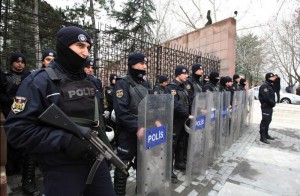 Events in Turkey remind us there's a direct connection between authoritarianism and pollution. Polluters depend on closed doors, opaque operations and a heavy hand – the same conditions that allow authoritarian governments to thrive. Because of ownership connections, supply contracts and employment pools, there's often no delineation between where government ends and industry begins – witness the 21st Century "Red Army Inc." in China, or the state-approved Russian Oligarchies.
Events in Turkey remind us there's a direct connection between authoritarianism and pollution. Polluters depend on closed doors, opaque operations and a heavy hand – the same conditions that allow authoritarian governments to thrive. Because of ownership connections, supply contracts and employment pools, there's often no delineation between where government ends and industry begins – witness the 21st Century "Red Army Inc." in China, or the state-approved Russian Oligarchies.
Corruption is institutionalized in such places. Pollution is just another form of state-sponsored crime that's overlooked by everyone that matters. With one large exception. When the crime is padding payrolls or skimming profits, it's not worth the trouble of ordinary citizens to speak out. It's a matter between the Powerful. But when the result of the crime is making your kids sick, or ruining your farm stock and land, then you have less to lose by fighting back.
And in a country run by an authoritarian government, what does fighting back mean? Well, it doesn't mean filing a complaint or going to court because those options are not allowed, or at least not allowed to be successful. Your options are very limited. That's why Chinese parents resort to kidnapping factory managers, and arson these days to protest new petrochemical plants. And it's one of the reasons why the events in Turkey took on a life of their own after being sparked by the brave stand of three people to save a park in Istanbul in the middle of the night.
One of the most serious misdiagnosis of the right is it's derision of everything "green" as the silly aspirations of white, middle-class youngsters with too-much-time-on-their-hands. Environmental health is a fundamental "freedom" issue. Invasion of your lungs and intestines with adverse foreign substances is the ultimate eminent domain issue. It's trespassing. Parents want to protect their kids from poisons. People want to breathe clean air and drink clean water. They want to look at things besides offices buildings and feel something besides concrete beneath their feet. To be Free, to Enjoy Freedom, human beings have to experience Free places – Smog Free, Pollution-Free, Sprawl-Free. This was the Libertarian-influenced force behind early American conservation and park-building – as championed by stout GOPer Teddy Roosevelt.
Oddly enough, it turns out that yearning isn't confined to Young White People in America, or even America itself. It seems to be a universal yearning that people in every continent have been increasingly expressing. To fight for environmental justice in Authoritarian-run countries is to be a true "Freedom Fighter." But most of the Right is deaf to this. The very constituencies you'd think it'd be championing – Chinese peasants getting shat on by their communist-in-name-only state-industrial complex – get ignored.
Now, granted Texas isn't a Turkey or a China, but you don't have to live in another country to see authoritarianism seeping into, and affecting, the politics of pollution. Exhibit A: the secret agreement between out-going Dallas city Manager Mary Suhm and Trinity East that was kept from the public for five years, even as it drove the city's agenda on gas drilling. That's a pretty clear example of the state and industry teaming up to become a single entity that had its own separate agenda from the public one either presented, as well as how the system is perverted to fit the deal instead of the public good.
To a lesser extent, severely restricting public comments at public meetings and the over-reacting to obnoxious hecklers is also part of this same strain. The less transparency for the deal makers, the better. The heavier the hand in quelling dissent, the better.
That's why fights over pollution are almost always fights over democracy too.
Residents Push Back on Frisco Smelter Clean-Up Standards; Report Raises Questions About Huge New City Park Next to “Potential Superfund Site”
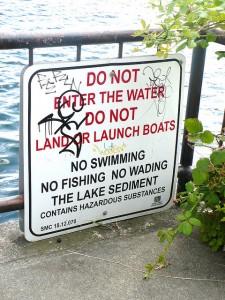 (Frisco)–Frisco residents directly challenged their city’s attempt to gloss over what they say is an important decision to use a less-protective testing method to find toxic contamination on the Exide smelter site, while also releasing a new report that chronicles how that contamination could disrupt plans to build the city’s ambitious “Grand Park.”
(Frisco)–Frisco residents directly challenged their city’s attempt to gloss over what they say is an important decision to use a less-protective testing method to find toxic contamination on the Exide smelter site, while also releasing a new report that chronicles how that contamination could disrupt plans to build the city’s ambitious “Grand Park.”
Saying city officials either don’t know what method is actually being used for finding “hot spots” of contamination, or isn’t being truthful about its use, members of Frisco Unleaded contrasted an official city denial from Assistant City Manager Ron Patterson with a March memo from the Texas Commission on Environmental Quality.
“Although you state in your response….“an industrial sampling protocol is not being used on the J Parcel,” you are incorrect,” says a letter sent by the group to Patterson and the Frisco City Council on Monday. “Please refer to the Texas Commission on Environmental Quality memo, dated March 8th of this year, accompanying our May 28th letter….TCEQ’s Danielle Lesikar clearly states that the 2 samples per acre testing method, “is a Commercial Industrial Standard,” and “only meets (the) Commercial-Industrial” standards. We’d appreciate if you’d forward documentation that disproves this statement….”
Members of the group say the difference is small but critical. Instead of eight soil samples per acre at the highly contaminated site, Exide is only sampling twice per acre, and so far less likely to find all the toxic material that needs to be removed to bring down high levels of lead, cadmium and other potential contaminants after almost 50 years of smelter operation.
Making sure there are no toxic surprises is important for redevelopment of the site itself, as well as the construction and use of the City’s new 275-acre Grand Park, located only 500 feet away from the smelter property and directly downstream of the Exide contamination via Stewart Creek, which is key to the park’s chain of lakes and water features. That’s the subject of the group’s new report.
“Poisoned Park? How Exide’s Lead Contamination Risks Frisco’s Grand Park,” was released to coincide with the last of three public “design meetings” for Grand Park at City Hall on Monday afternoon. In it, Frisco Unleaded compiles the long litany of abuse to Stewart Creek and the surrounding land by the smelter recorded by state and federal inspectors, including lining the banks of the Creek with toxic lead slag waste, dumping lead waste directly into the Creek, and locating waste dumps and pits in its floodplains.
“This poor Creek has been more or less an open sewer for the entire Exide smelter property for decades. There’s every indication that a lot of contamination is still there. And yet city officials are pretending that they aren’t trying to build a huge park centered along the course of this same Creek, immediately next door, and upstream of the Smelter. None of the previous design meetings have even raised the possibility of an environmental assessment of the threat Exide’s contamination poses to the Park,” said Frisco Unleaded board member Meghan Green.
Besides chronicling the past and current threats to the creek and potential ones to the new Park, the report features the boundaries of Exide’s hazardous waster permit superimposed on FEMA 100-year floodplain maps and USGS topographical maps to indicate how much of Stewart Creek has been affected by the Smelter, which literally sits on either side of its banks before flowing west under the Dallas North Tollway into what would be the new Grand Park.
“It’s important to get the most protective clean-up of the Exide property that we can” said Frisco Unleaded Chair Colette McCadden, “because all of the run-off from the property will be headed directly into the Park and the City itself has proposed building an entire Stewart Creek green belt corridor that would follow the Creek into the Park. This isn’t an industrial site that is sitting in isolation from people and activity. This is a site that’s next to Frisco’s largest park.”
“With the financial condition of the company deteriorating,” added Downwinders at Risk Director Jim Schermbeck, “it’s very possible the smelter site could end up on the EPA’s federal Superfund Site list, and then you’d have the a toxic waste dump site as a neighbor to Frisco’s most ambitious park.”
Among problems for Grand Park development pointed out by the report:
- Despite inspection reports citing known and potential contamination affecting Stewart Creek, no remediation has been performed there in 13 years.
- There’s not sufficient protection from flooding at the site, despite most of the facility being located in low-lying, flood prone areas.
- The FEMA 100-year floodplain runs directly through a landfill full of Exide lead slag, within just 100 feet of a “waste pile” of contaminated dredging from Stewart Creek, and within 200 feet of lead landfills that are in various states of disrepair.
- There’s been no extensive testing of soil, sediment or water within the boundaries of the new park, or between the Smelter and the park, where new contamination has recently been discovered.
The report makes four specific recommendations to insure park and public safety:
- City Officials should commission a full environmental assessment of the Grand Park Project before project planning and development go any further.
- The clean-up of the Exide smelter site should be to the most protective “Residential” standards to allow for open spaces use along Stewart Creek.
- All landfills, dumps and pits of lead waste should be removed from the Exide site to prevent future contamination problems from occurring.
- The water quality of Stewart Creek must be assured.
